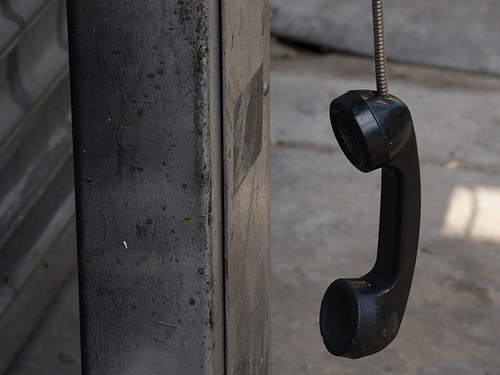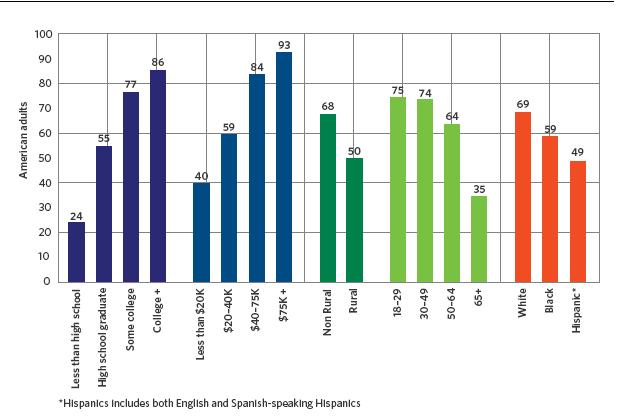FCC Says 93 Million Americans are 'Disconnected'

WASHINGTON: The FCC has determined that about one-third of Americans don’t have a broadband Internet connection at home. The main barriers to adoption are cost and literacy, the commission said. The agency is working on a plan to deploy nationwide wireless broadband, due to Congress March 17. The usage study, “Broadband Adoption and Use in America,” is being released today at the Brookings Institution.
“We need to tackle the challenge of connecting 93 million Americans to our broadband future,” said FCC Chairman Julius Genachowski. “In the 21st century, a digital divide is an opportunity divide. To bolster American competitiveness abroad and create the jobs of the future here at home, we need to make sure that all Americans have the skills and means to fully participate in the digital economy.”
The FCC said its plan “details a strategy for connecting the country to affordable, world-class broadband.” The notion is that ubiquitous broadband access will create jobs and drive economic growth.
The commission said it conducted a national random “digit-dial” survey of more than 5,000 people in October and November 2009 to get a handle on who has broadband. Around 35 percent of adults did not have home connections--roughly 80 million adults and 13 million kids five and older. Broadband for the purposes of the survey was defined not by speed, but by connection type, e.g., cable modem, DSL, fixed wireless, satellite, mobile wireless, fiber-optic or T-1.
Among other findings:
- 65 percent of adults have broadband at home.
- 6 percent of Americans use dial-up.
- 6 percent surf at the library, work or community centers.
The survey indicated that income and education delineated broadband access and non-adoption.
- 46 percent high school graduates had broadband at home versus 82 percent of people who attended college.
- 36 percent said they don’t subscribe at home because of the cost; the average monthly broadband bill was found to be $41.
The FCC cited “digital literacy,” or lack there-of, as a barrier. Twenty-two percent of non-adopters said they either didn’t have “digital skills” or were concerned about the security risks of the ’Net. Nineteen percent said the Internet is a “waste of time.”
“The gap in broadband adoption is a problem with many different dimensions that will require many different solutions,” said John Horrigan, director of consumer Research for the Omnibus Broadband Initiative. “Lowering costs of service or hardware, helping people develop online skills, and informing them about applications relevant to their lives are all key to sustainable adoption.”
The FCC figured there were four categories of non-adopters. There are the “near converts,” comprising about a third of the hold-outs who either have dial-up or go to the library. Their median age is 45.The “digital hopefuls” made up 22 percent of the total. Predominately Hispanic and African-American, this group didn’t have the necessary resources for broadband access.
Then there were the “digitally uncomfortable,” 20 percent of non-adopters, who displayed “tepid attitudes” toward the ’Net, the FCC said. The fourth group, the “digitally distant,” comprised 28 percent of non-adopters, and didn’t see the point of being online. Median age was 63.
The complete 52-page survey is available at the FCC Web site in .pdf form.
The agency last week released what it termed “working recommendations” for the national broadband plan. Rather than provide and outline or details on an infrastructure proposal, the recommendations simply enumerate the projected benefits of nationwide broadband access. (See “FCC’s Broadband Plan Working Recommendations.”)
(Image by Bonnie Natko)

The professional video industry's #1 source for news, trends and product and tech information. Sign up below.
